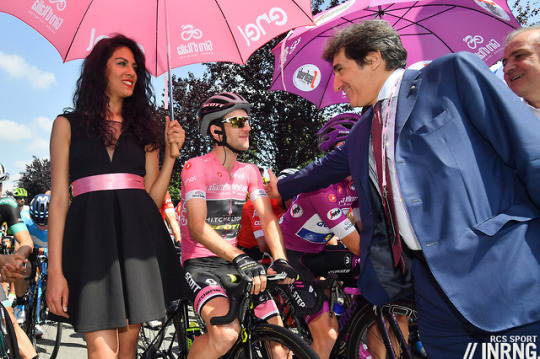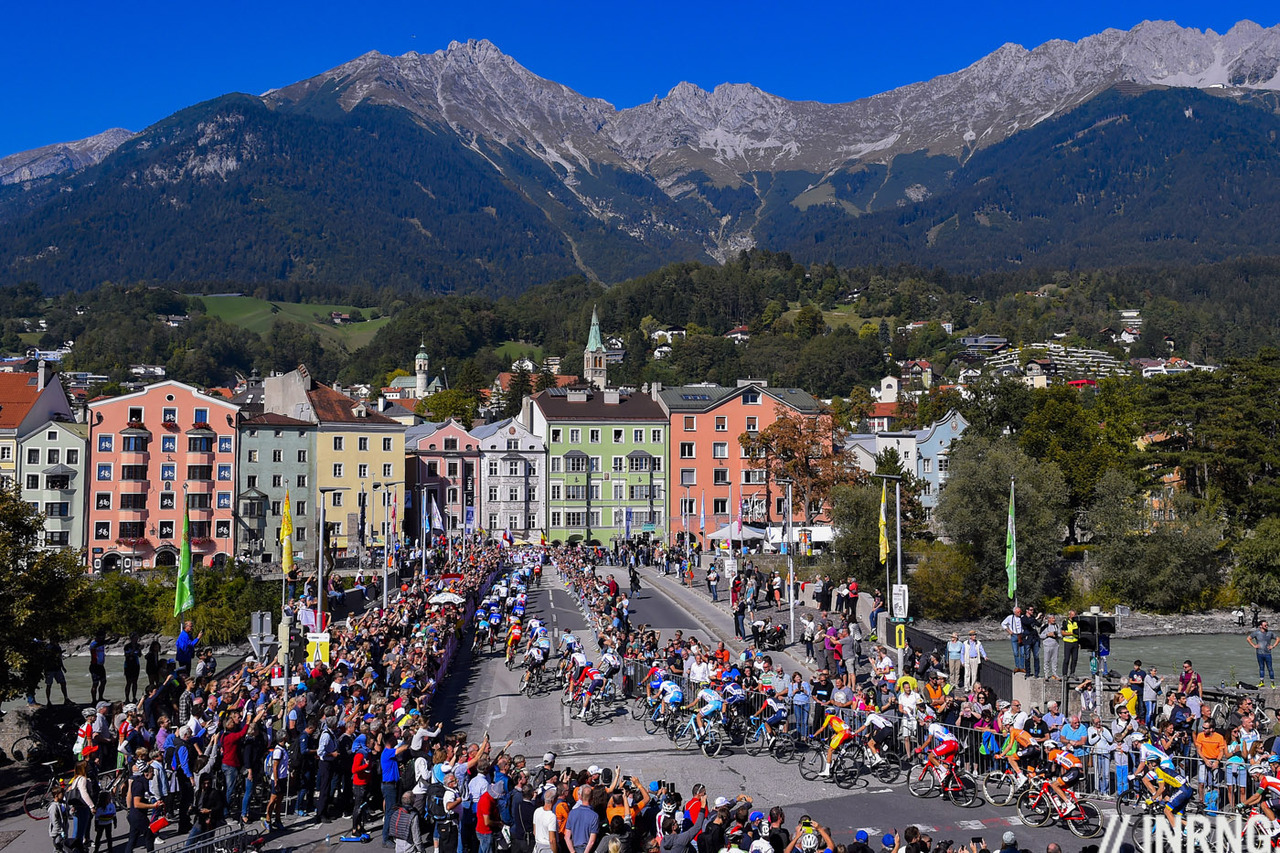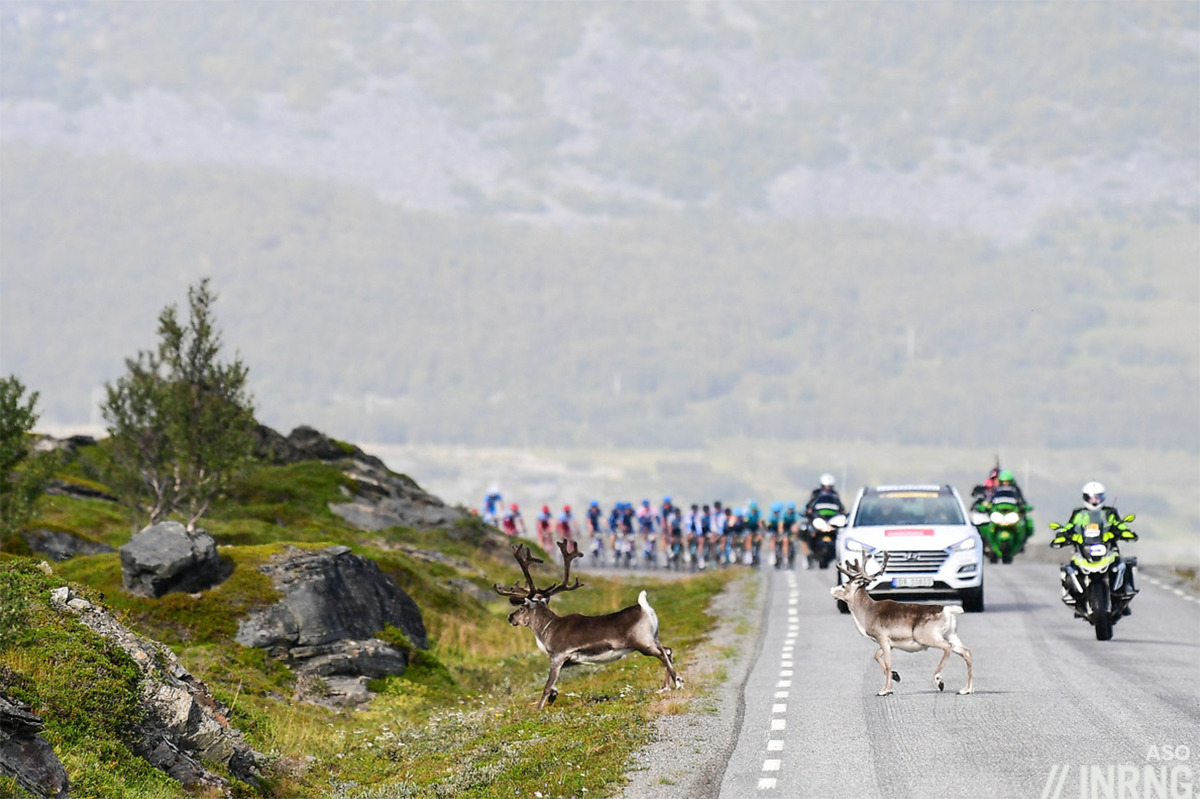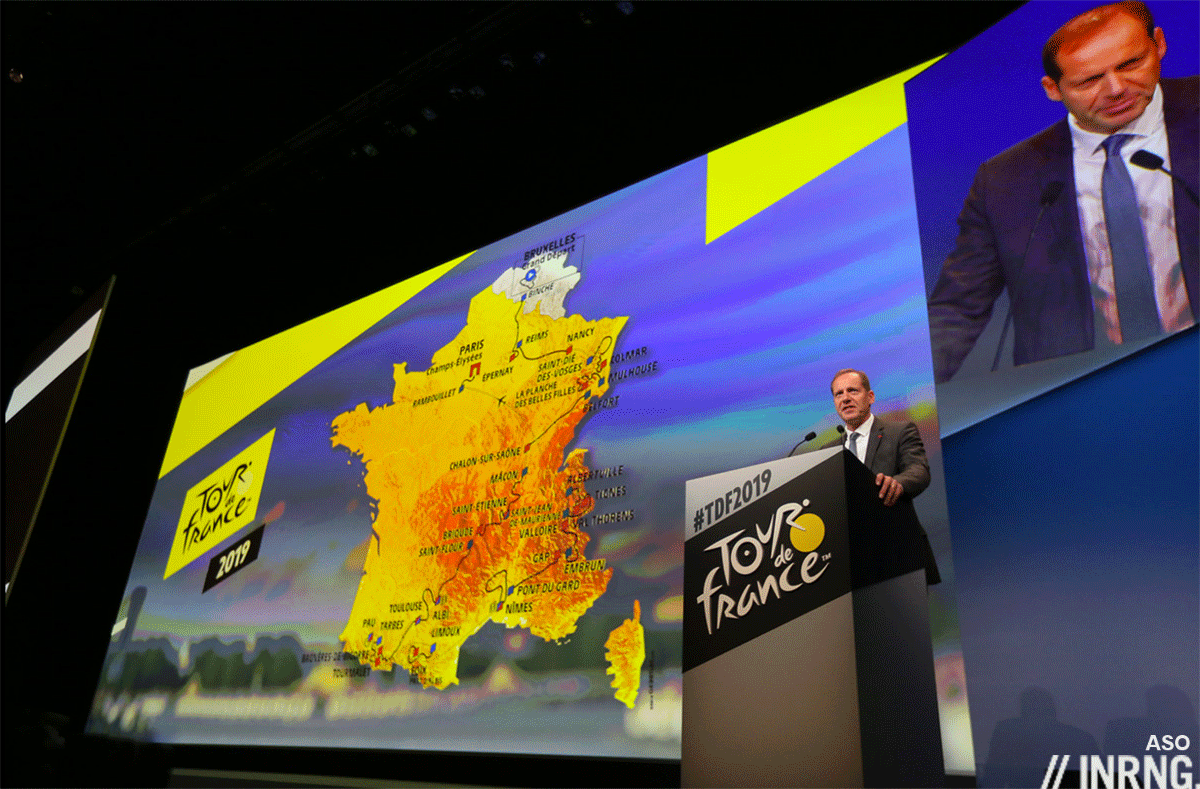Several years ago “revenue sharing” was all the rage with several team managers making public calls for the major race organisers to pay them money. Only even if a race owner felt inclined, when you looked at the data the sums available were small. Now it’s time to refresh the numbers and also to see how the teams are doing.
The Tour de France is the pro cycling’s biggest event and, like so often in sporting arenas, the winner takes all. It’s got the name recognition, the biggest audience, the most valuable TV rights and so on. It makes money from three main channels: selling TV rights; advertising income from jerseys, hoardings, the publicity caravan and other sponsorship; and hosting fees, whether for a stage finish en route or the lucrative grand départs. How much? We don’t know, there are no accounts for the Tour de France but it is owned and run by Amaury Sport Organisation (ASO) whose audited accounts state revenue to be €227.1 million for the year ending 2017, the latest available accounts. Here’s the screengrab:

As well as the Tour de France, ASO owns other races like the Vuelta a España, Paris-Nice and Critérium du Dauphiné, Paris-Roubaix, Liège-Bastogne-Liège, the Flèche Wallonne and Paris-Tours among others. It is also involved in the Tour of Oman, the Tour de Yorkshire, the Arctic Race of Norway, the Deutschland Tour and the Tour de California. You’ll also know the Saitama and Shanghai criterium events. It also runs motorsport rallies like Paris-Dakar, golf tournaments, the Paris marathon and other urban runs as well as the sailing Tour of France. What share of the €227 million revenue is derived from pro cycling isn’t public but even if we just assumed it was 100% and then compounded this wrong assumption with the wild idea that ASO would give away half its revenue to the 22 pro teams that race the Tour de France then we’d get to €5.1 million per team. Only these revenues have costs too, ASO has wages and social security to pay, offices to rent, hotels to reserve, police charges are due and more. Trawl the accounts and these costs amounted to €182.6 million, leaving a profit of €44.5 million for 2017.
Now assume again 50% of this profit is shared among the teams 22 teams and it’s €1 million per team. Useful but it doesn’t change the game and we’re still assuming all of ASO’s revenue comes from cycling and the Amaury family would somehow donate half of their profits to teams owned by corporations, governments and billionaires.

ASO is only one organiser. RCS Sport is number two and runs the Giro, and owns Tirreno-Adriatico, the UAE Tour, Milan-Sanremo and Il Lombardia. It also promotes marathons and other sports events, like powerboating races in the Middle-East. It’s a subsidiary of RCS which is now controlled by Urbano Cairo (pictured) but not yet acquired in full and for now they still publish accounts with details. Here’s a screengrab for RCS Sport in 2017:

RCS Sport’s revenue for 2017 was €74.9 million with EBITDA, a measure of operating profit, reported at €22.7 million (accounts here). So assume it’s net profit, assume RCS also makes 100% of its profit from cycling, assume they too would pay away half of this to 22 teams and it’s €0.5 million per team. There are other race organisers. Flanders Classics is the third biggest organiser but even using the wild and daft assumptions above we probably can’t get to €2 million per team from all the race organisers, a nice sum but one that won’t bridge the loss of a title sponsor by itself and again it’s built on assumptions that are wrong but picked to illustrate a very generous case.
Note races do share a little money. There is a compulsory participation allowance paid by all World Tour races but it’s not much, a few thousand Euros per team for a one day race say the UCI rules. For grand tours the number isn’t fixed, The Tour de France used to make the number public and it was around €50,000 with more based on the number of riders who reached Paris. Last year we learned the Giro varies its participation fee to encourage teams to send more star riders.

Why so little money?
It’s expensive to run a bike race. It’s one thing to mount a camera on a tripod in a football stadium for 90 minutes, another to ensure an unbroken live link as a race progresses across a mountain range. For three weeks. So the TV rights come with a big cost: production is pricey. Also we might like to think cycling is a huge sport and there are claims the Tour de France is the world’s third biggest sports event after the FIFA World Cup and the Olympics but this is bogus. Cycling just isn’t that big a deal, it doesn’t get huge audiences and the advertising sold during a race isn’t worth that much. Most of a grand tour takes place mid-afternoon, midweek. See for yourself: mid-afternoon TV coverage often features low-rent adverts for funeral plans and calcium-enriched vitamin pills rather than cars and smartphones.
It’s also free, cycling teams don’t have ticket sales that often go to football or basketball teams. Nobody is going to sell tickets to access to the Stelvio or Galibier. For starters it’d be near-impossible to fence off an open mountain. More importantly the moment you put a price on attending it is the moment people would question whether it’s worth it and start to ask for things in return, such as toilets, food, television screens and more. You can do VIP zones in contained areas, but can’t ticket everyone.
Many races run at a loss. While the Tour and Giro grab the headlines and make profits, the likes of say, Tirreno-Adriatico and the Critérium du Dauphiné can lose money (Tirreno is said to lose money, the Dauphiné’s latest accounts show a small loss) and they’re big name events yet need the profits made from the Tour and Giro to keep these subsidiary races afloat. Many smaller races outside of ASO and RCS’s portfolios struggle, for example the Volta a Catalunya has needed emergency funding to keep it going in recent years. Plenty of races don’t have a cent of TV income to share and instead of selling broadcast rights they pay €50-80,000 a day for a production crew to come and film but the race’s backers pay because it gives publicity to the region, brings in sponsors.
Prune Juice
You might be familiar with the “prune juice” concept, once described by a British football club owner who saw that as soon as he poured new money into his club it went straight back out. Any extra money poured into a team’s topline flows out immediately in the form of athlete wages because this is still the biggest way to gain an advantage over rival teams, to buy in the best talent. If you were in charge of, say, Bardiani-CSF and suddenly have an extra €20 million to spend a year chances are you start recruiting big names rather than building a training centre for your existing roster.
So revenue sharing alone, even if the money existed, would need to be part of a bigger package that incorporates budget caps or salary controls. Otherwise every rider and agent would know each team would have more money to spend on wages and it’d just inflate wages rather than change the structure of the sport.

The state of play
Since we looked at the topic five years ago the sales and profits of ASO and RCS have grown since the but the story is still the same, as you can see via the snapshots posted above there’s still not much money to share. If the numbers have gone up since the last time we looked, so have team budgets too, indeed there’s never been as much money in pro cycling as there is today, team budgets are bigger than ever. Perhaps this is why there’s less debate in public over the size of the slices of the pie everyone should get?
Structurally teams seem to have moved on, rather than focusing on demanding a bigger slice of the cake they’re started looking at new recipes. Several teams have clubbed together to create Velon but this has yet to become a moneymaker, its accounts show negative equity and auditors caution the venture can only continue if the teams commit money but new ventures can take time to get going and the negative equity is shrinking, they’re earning money from on-bike footage and promoting their Hammer Series races.
More than ever the 18 teams in the World Tour are embedded at the top, there’s no guarantee they’ll stay but as long as they fend off the teams in, say, 20th place, they they’ve got almost guaranteed access to the top races including the Tour de France, the golden ticket, it’s almost a de facto franchise system. It’s still brittle, especially if a sponsor pulls out suddenly rather than giving a couple of years’ notice.
Meanwhile the UCI has created a set of criteria for the World Tour teams compelling them to invest a little for example they need a minimum of three full time coaching staff and a “performance director” when only a few years ago it was oddly acceptable to have key riders on a team coached by an outsider. The public perception of pro cycling rhyming with doping has receded, there are fewer scandals and sponsors aren’t so scared.
Conclusion
Revenue sharing is not such a hot topic these days, Oleg Tinkov’s retreat from the sport means there’s less of a megaphone calling for it. But it’s still a zombie issue that stalks conversations, only yesterday a reader raised it in the comments here. After several years of referring people to the old piece it’s been due an update with fresh data. The new numbers tell the same old story: even using wild assumptions there’s just not much money to share.


Noel summed it up for me on the previous blog post: ‘at the end of the day it’s the races, not the teams that are important… if the Giro fails for example, then the sport really has lost something irreplaceable.’
Controlling teams’ spending is a better way to improve financial stability (greater sporting parity would be another bonus) – and much more achievable – than trying to bring in more cash via wealthy sponsors or other means, as that would simply increase the disparities between teams’ finances and put increased pressure on the poorer teams.
People need to accept that there just isn’t that much money in cycling and nor is there likely to ever be. And that’s not a problem – the sport’s worth isn’t based on money – as long as you control the finances so that teams can survive more easily.
I agree completely.
The sport is in poor financial health, so it needs a plan to consolidate and stabilise before anyone thinks of growing again.
Reducing prize money and allocating the money to the lower budget teams could be an option for achieving a bit of parity.
Above all, cycling needs to quit the dysfunctional WADA system and get serious about doping. Deal with the loss of credibility and the financial issue will turn around.
The thing always missing from discussions about revenue sharing is that nobody can ever finish this sentence:
“Thank you for the pay rise. In return, we the teams will…”
Stop riding negatively?
Blank out sponsors who are rivals of the race’s sponsors? (could be a good one if additional payments were made optional)
Stop cheating?
Control our spending?
Contribute to a central reserve fund?
That’s it although the idea for the stability is that it wouldn’t be a pay rise but money saved for the rainy day when a sponsor pulls out, so the team is less dependent on one source of income, ie a title sponsor. But lose a title sponsor and it’s a big hit, the other revenue source needs to be substantial to cover for just one year.
I am curious if teams have been formed by / associated with more tangible assets that have a clearer / more sustainable business model. For example a velodrome that also runs a road cycling team, or organizes a race, does cyclo-tourism, etc.
The “team” (including the facility / race / other for-profit cycling business) make money from renting out the velodrome, running the race (although I understand that is a stretch already though as you say above) and the profits get fed into the pro team.
just a follow up… if it wasn’t clear. The aim of combining the team with a more tangible asset like a velodrome / training facility / race, would be to diversify revenue streams similar to most other professional sports. They get revenue from sponsors and merchandise, but also ticket sales at their venue, and renting out the venue for other uses, etc.
I get you and nothing really. The Aqua Blue team was supposed to be an e-commerce platform that would fund the team but the sales didn’t go as planned. Sunweb are building a facility at the moment that’ll be a team HQ but fans can visit; I think in the past they did look at building a training camp where amateurs could come to stay, ride with the pros etc.
Lotto Soudal have their ‘Captains of Cycling’ concept, it’s all a bit vague and doesn’t seem to get a whole lot of traction but it’s supposed to generate some tangible returns for fans who buy a share of the team or something like that.
well, Aqua Blue Sport tried the “sustainable model” with a retail website… and made such a good job of it no one realised that’s what it was (I’d assumed it was some corporate twaddle holding name like GreenEdge or Leopard).
I understand cycling flaw, as mentioned above, as teams depending on a single-source income.
I wonder though, how often team-structures really disappear, for example how much bmc staff(mechanix, soigneurs etc) is still around on the bmccc team?
The cycling podcast mentioned Boras approach to too seeing a cycling-team as well as a marketing-event-company.
Are there any example of sustainable cycling team/structures which have created a business-model without a sole-income-source?
The idea of revenue sharing from races, where local authorities are often one of the main contributors, would be a disastrous waste of public monies and a sure fire way to create a local political backlash.
Public money supports the races for a reason; to boost their local economy and not the teams / riders’ bank balances.
A quick Google suggests that the total annual revenues for the cycle industry is around 40-50 billion euros/dollars/pounds (take your pick). I’m surprised so little goes to support professional cycling compared to, say, Formula 1 where the car industry seems only too happy to pour money into the sport.
Car industry is a bit bigger than the bike industry, don’t you think?
i mean they do, right? specialized pays quite a bit to keep sagan around and to keep quick-step on their bikes (for some time now). that’s not to mention merida—who is the largest manufacturer—or giant supporting sunweb.
Or Trek with their team, BMC sort of thanks to Andy Rihs, and Giant have had naming rights too but there are only a few brands capable of this, it’s actually a relatively small industry, it costs a lot to fund a pro team and a few brands can pay and supply the pro teams but naming rights are out of their budget; that said the need for the likes of Trek, Merida, Specialized to be visible is a dependable source of income for some teams but only half the 18 at a stretch.
*cough* Cannondale *cough*
Anand – exactly. Cycling total industry revenue may be 50B but auto industry is probably 100 fold and therefore the percentage thrown back into all forms of auto racing is likely similar to cycling on a relative scale.
What does my point prove? Nada. It just highlights how minor the cycling sport/industry is on an international level.
Hoardings?
That’s what Pozzo and Il Piccolo will do now that they have time on their side.
I imagine a lot of bikes and bottles in their hoards.
EBITDA is explained in the report as: (1) Earnings before interest, tax, amortization/depreciation and impairment losses. Includes the share of profits and losses of equity-accounted investees. Also includes net non-recurring expense.
That’s what she said.
I have had a lot of dealings with Italian companies, and this almost 300 pages of (un)explaining of why/when/what or WTF is typical. Not that it’s any different in other countries, only they would do it in 30 of lawyer-speak. I didn’t read it all, mind you.
Serious question: is there genuinely anybody who thinks that if all the teams were within a few Euros of each other on budget that the races would be better and the sport more enjoyable? Are there actually people that naive as to think that all sport is about is some imagined parity? As far as I’m aware nearly everyone involved in the sport in any way is a commercial entity, from riders who win things doing book deals and cashing in on their moment in the spotlight to all the team sponsors and the entourage of hangers on. In other words, no one is doing this for some high minded ideal. Everyone is looking for a return for their input. And rightly so.
Is that you, RonDE? I think you’ll find quite a few readers who’d like to see more competition between teams on the road and the budget is the way to do this, but that’s not today’s topic.
“….no one is doing this for some high minded ideal.” This claim pretty much sums up the issue. Correct me if I’m wrong, but doesn’t the UCI have rules specifically against turning a profit from owning/running a team? SPORT itself should be proud of being described as a “high minded ideal.” Why do so many athletes show up every 4 years to the Olympic Games? Are you going to claim it’s just for the vast commercial endorsements doled out to the gold medal winning team handball squad? There’s a LOT more to sport than financial return on investment and I’m sorry for you if you’re unable to see it.
Larry T – UCI has rules against teams turning a profit?!?!?!? What? The team owners take a management fee or dividends or some sort of profit based distribution and right they should! Running a bike team is probably one of the riskiest business ventures on the planet!
Do you give all the profits from your travel company back to amateur sport?
RonDelista, I think almost everyone bar you can see that greater parity between the teams would very probably lead to more equal and thus more exciting racing.
It wouldn’t be every race, but some races would be better.
I’m not sure why you would imagine that anyone would be unaware of what the teams’ and riders’ interests are.
However, why would the governing body’s interests not be the most interesting and entertaining sport – as opposed to increased wealth for a minority?
I recently attended a talk by Dimension Data (the company not the team) on the use of data in cycling. DD believe TV revenue sharing is a non starter and the company does not sponsor the team for the purposes of getting TV air time. Like Inner Ring says, there is not enough money to go around and the audience they are targeting is not watching TV in the middle of the day. Their audience is a millennial with at least two digital devices on them, who follows twitter and YouTube instead of watching TV.
They are concerned (unsurprisingly) with data, and how they can monetise the data generated form all the pro-cyclists. They are looking to add additional data streams to supplement, speed, cadence, HR etc, with the aim of using machine learning algorithms to predict the race. This may seem a little off topic, however the overall aim is to sell this prediction algorithm to betting companies. The take away from the talk was the company monetises its sponsorship or the team not through TV but through selling data to betting companies.
If you exclude the ethical issues of betting, at least this is a team and sponsor with a alternative revenue stream. Removing the need to get TV revenue.
I think other team and sponsors, like Velon and DD, should also think in more of a 21st century way. The days of filling up the jersey with random sponsors and asking for TV money has passed.
Good points and a topic to explore further. As you say just having the jersey on TV is publicity but may not be worth much (it could be negative even, eg people see a hopeless breakaway up the road and associate the brands with failure). But it depends on the target audience, different teams are trying to reach different groups of people, whether consumers, cyclists, wholesale customers etc and this can be via social media, by VIP days at races… TV is only a part.
I think the owner of SIS (Science in Sport – gels and sports drinks etc) made a similar point in a recent cycling podcast in relationship to their sponsorship of Team Sky (Episode ‘The End of team Sky’ from about 59 mins in). They were not just paying for their name on jersey, they were paying for a relationship and for the team to be part of their marketing strategy and improving brand awareness.
This would be a really interesting subject to expand on. Look forward to reading that at some stage during the year.
Just to raise my usual objection to the “prune juice” quote. No matter how team owners think, money is not going out of cycling if it’s being paid to cyclists.
It goes on wages but the idea is its inflationary, no sooner does more money come in does it straight back out.
Lefèvre, from Deceunick-Quickstep is claiming organizer money forthe best team in cycling
See here in Flemish: https://sporza.be/nl/2019/01/08/lefevere-en-van-eeckhaut-over-deceuninck-quick-step/